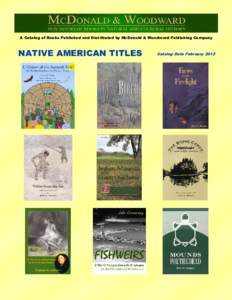<--- Back to Details
| First Page | Document Content | |
|---|---|---|
 Date: 2012-02-29 09:40:47Ojibwe Ojibwe people Upper Peninsula of Michigan Adena culture Ozhaguscodaywayquay Mound Ojibway Tumulus First Nations History of North America Americas |
Add to Reading List |
| First Page | Document Content | |
|---|---|---|
 Date: 2012-02-29 09:40:47Ojibwe Ojibwe people Upper Peninsula of Michigan Adena culture Ozhaguscodaywayquay Mound Ojibway Tumulus First Nations History of North America Americas |
Add to Reading List |